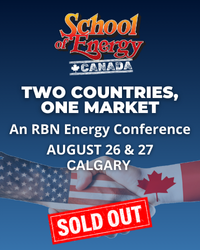Crude prices have been at three-year lows this week as the world appears to be awash with supplies. With OPEC apparently not willing to defend higher prices by reducing their output, attention has turned to the likely impact on U.S. shale production of a lower price regime. Today we explore why shale production is unlikely to slow down rapidly and may even increase as producers move rigs to plays with higher returns.
CME Nymex West Texas Intermediate (WTI) crude prices were down 28 percent from their June high of $107/Bbl to $77/Bbl on November 4, 2014. This price fall to three year lows has been prompted by a perceived oversupply of crude in world markets versus demand. Driven by new technology and oil extracted from tight shale formations, U.S. crude production has risen by 1 MMb/d during each of the past three years – pushing out imports into the world market. With more barrels chasing lower demand for oil, prices have fallen. The pricing weakness is compounded by a perceived lack of discipline to reduce output by the traditional swing producers within OPEC – including Saudi Arabia. As we discussed in a recent blog, the actions of that nation appear to indicate a strategy to retain market share at the expense of higher prices, at least for the moment (see Crude falls To Pieces).
|
N E W R E P O R T ! ! Battle for Henry Hub Examines the impact of huge surpluses of natural gas bearing down on the Henry Hub in South Louisiana from Marcellus/Utica in the east and supplies from the west sourced from high-BTU and associated gas from plays in TX, NM, OK and ND More information about Battle for Henry Hub here. |
Lower crude prices here in the U.S. have focused attention on how the new price levels will impact continued shale production. Market conspiracy theorists speculate that Saudi Arabia is sitting on its hands as prices fall until U.S. shale producers “feel the pain” of lower rates of return and shut in production. The assumption is that lower oil prices will push the economics of U.S. shale production under water. And if U.S. producers stop drilling (so the theory goes) then conventional producers like the Saudi’s will benefit as prices increase again once crude supply and demand are back in balance.
The trouble with this theory is that it relies on U.S. shale producers collectively feeling the pain, raising their hands in surrender and shutting in production in short order. But as we shall see, that outcome is highly unlikely, given the nature of shale production economics. In fact rates of return for some producers in some basins would allow them to continue drilling profitably even if oil prices fell below $50/Bbl. And another important feature of shale production economics is the way in which producers have successfully shifted drilling rigs away from less profitable plays towards locations with higher returns as market circumstances changed. Producers have also continued to benefit from improvements in productivity that bring down costs and increase rates of return – even at lower market price levels. In this post we review these strengths of U.S. shale production economics. In later episodes we will look more closely at the sensitivity of rates of return in particular basins to changes in crude prices.
Shale Production Economics
We have previously covered the unique production economics of U.S. shale wells in RBN blogs. Just over a year ago we provided a detailed description of shale gas production economics in the Haynesville in our blog series “The Truth is Out There”. A more comprehensive guide to shale oil, natural gas liquids and natural gas production economics was contained in our recent blog and drill down report describing superior drilling economics in the Permian Basin of West Texas (see Stacked Deck – Why Producers Like Their Odds in the Permian). Shale production involves horizontal drilling and hydraulic fracturing techniques that are relatively expensive compared to traditional vertical drilling (see Tales of the Tight Sand Laterals) so drilling and completion costs are high. But this higher up-front investment is rewarded by typically higher initial production (IP) rates from shale wells that pay back the producer’s investment rapidly. Shale producers typically drill more wells but extract more hydrocarbons more rapidly than their conventional counterparts. The trick to improving rates of return is to drill as efficiently as possible where IP rates are highest – reducing costs at the same time as you increase output, which has a double edged impact on the per unit cost of production (lower costs, higher volumes = lower per unit costs). To that end techniques such as starting multiple wells from the same drilling pad to reduce drilling costs and improve returns have evolved as producers increase productivity. Once infrastructure is in place to transport output to market, the overhead cost of new wells is further reduced.
Join Backstage Pass to Read Full Article










